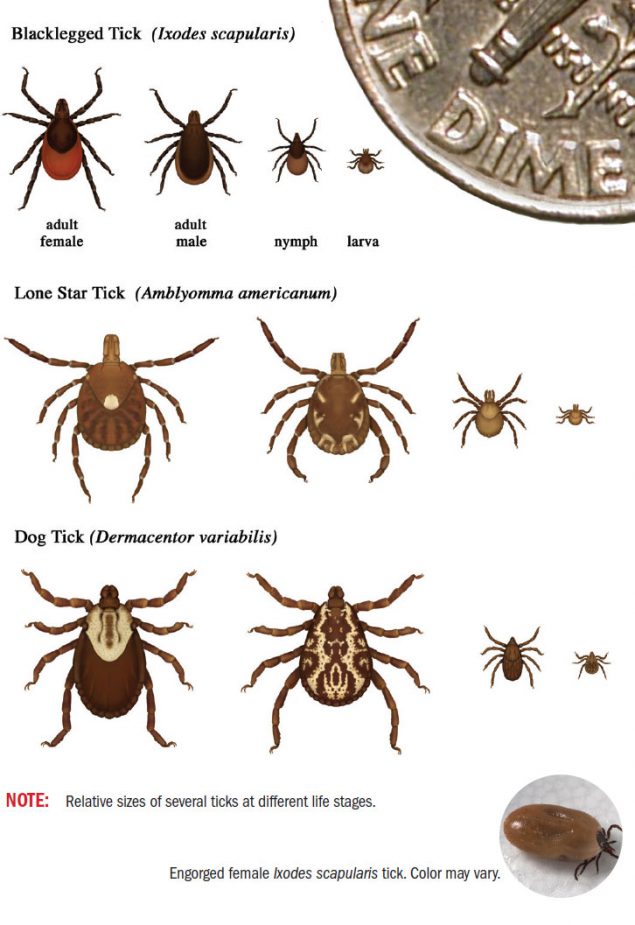DISCLAIMER: The following post is not intended to act as medical advice in regards to ticks and tick bites. As always, please consult your doctor with any questions about ticks and tick bites.
It’s summer, and for a lot of families who are camping or enjoying time in nature, summer means ticks. Yes, those tiny, crawling bugs are out in full force. As moms, we want to remain vigilant and protect our families from this summertime pest. Would you know what to do if someone in your family was bitten by a tick?
Recently, Elizabeth, owner of Detroit Mom, dealt with this. She had just braided her daughter’s hair when she noticed a little mark on the back of her head. When she looked closer at it, she realized what it was–a tick!
After sharing her experience with our community, she realized there’s a lot of important information that needs to be shared. And, other websites weren’t exactly Mom-friendly in terms of explanations. So, we decided to put together a guide of our own. We present to you: A Mom’s Guide to Ticks.
What is a tick?
Let’s start with what a tick is NOT–according to Nemours Kids Health, they are actually not insects; they’re part of the family that includes spiders. Ticks are essentially small creatures that feed on blood. Deer and dog ticks, according to Nemours, are the most common types of ticks talked about, but there are actually more than 100 types of ticks. So, they’re quite the summer pest.

Where are ticks commonly found?
The Michigan Department of Health and Human Services has a really handy map showing you where the different Michigan ticks are generally found. Generally, though, plan to be on the lookout for ticks if you’re near grassy or wooded areas. And, remember–some ticks can be found on animals. If you’re out near the woods or grassy areas, make sure to check your furry family members, too.
Why should we worry about ticks?
So, the thing about ticks is that some kinds of ticks can transmit diseases to people by biting (like Lyme disease, as mentioned by the CDC). The CDC also makes mention of the fact that ticks can’t jump or fly, so it’s not like you’ll be seeing the tick make its way to you. According to the CDC, ticks will hold onto grasses with their third and fourth legs and keep their first legs stretched out in order to climb onto the host as they walk by. Some ticks also have an anesthetic property, so the host may not even realize they have been bitten. This is why it’s so important to do tick checks regularly.
What should I do if someone in my family gets bitten by a tick?
If you notice a tick, stay calm (easier said than done, I know!). The American Academy of Dermatology Association recommends using tweezers to remove the tick and to do so by pulling upwards with steady pressure (watch the video below!). They recommend disposing of the tick by putting it in a sealed container. You can also find tools on Amazon that can be used to help remove the tick, like this 3 in 1 kit or this tick remover. And, according to OSF Healthcare, it’s important to note that ticks can bite, but they do not burrow under the skin.
Nemours KidsHealth also recommends watching the area for any changes–especially for if the bump turns red and starts to form a rash that resembles a bull’s-eye, red dots on the wrists and/or ankles, or flu-like symptoms. These are all instances in which you should get seen by a doctor. That being said, it can’t hurt to have your doctor take a look, regardless of the severity of symptoms.
What should I do with the tick after removing it?
It is recommended to dispose of the tick by putting it in a sealed container. You may want to save it in case you develop symptoms and need the tick to be tested for disease (Nemours KidsHealth suggests storing it in a sealed container or a ziploc bag). Honestly, it’s worth the peace of mind to hang on to it for a bit, just in case. You never know if you might develop symptoms, and you’ll feel much more at ease knowing you have the tick and it can be tested. (Nemours Kids Health did note that a tick needs to be attached for 36 hours before it can transfer germs to the host–but, it can’t hurt to get seen by a doctor, just in case.)
How can I prevent tick bites?
- The Michigan Department of Health and Human Services recommends using a bug spray with no more than 30% DEET to prevent ticks, and for your clothes using a repellent that contains permethrin.
- One of our favorite local small businesses, Natural Red, sells a ticked insect repellent.
- If you’re going for a walk on a trail, Nemours Kids Health recommends walking in the center of the trail, away from grasses and trees, and wearing long pants, long sleeved shirts, and closed toe shoes (and remember to tuck your pants into your boots, if you can!).
- Last but not least, before going indoors–CHECK for ticks!
Summer is the best time to be outdoors and we know that with being outdoors, comes ticks. We hope that you feel a little bit more prepared about what to do in the event of a tick–and that you’re able to be the cool, calm, and collected mama that you know you are!











